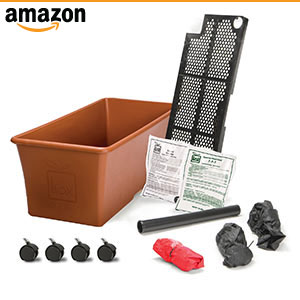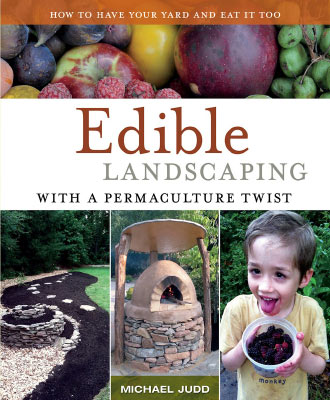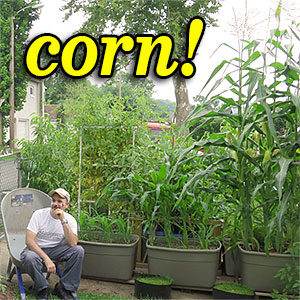Gardening in Self-Watering Planters & Containers
If you've been trying your hand at container gardening, then you can appreciate the value of a system that reduces the labor involved in watering. In the heat of the Summer, as your vegetables reach their prime, you may find it impossible to keep them hydrated. And once that potting mix dries out, re-moistening the mix can be quite bothersome. A lot of water is wasted as it runs down the inner edge of your pot and straight out the drain holes.
THE PERFECT UPGRADE FOR ANNUALS: Self-watering containers, aka sub-irrigated planters (SIPs) are the ultimate evolution in container gardening. Such containers can be designed for both indoor and outdoor growing. The sizes can be scaled from very, very small (like my Albo-stein) to full sized wicking garden beds.
- What is a Self-Watering Container?
- DEFINITION: Self-watering containers are planters that are designed to hold water in a lower reservoir. This extra cache of water replenishes the soil moisture as plants draw it up through transpiration. Although they are called "self-watering", they are not truly automated systems unless they are tied into a water supply line like a rain barrel or garden hose.
These are also termed as SIPs (sub-irrigated planters). Sub-irrigation refers to the way that the water is supplied, or irrigated. It is delivered from below the soil surface. The sub-irrigation may refer to the initial watering process of filling the reservoir. Or it may merely refer to the subsequent wicking action that occurs over time through capillary forces. For a more exhaustive explanation, see my SIP Basics: How the Systems Work page.
Learning More About Self-Watering Containers:
SIP Basics: How the Systems Work - Learn more about the mechanics behind a sub-irrigated container. How do they work? Are they hydroponic? Is "self-watering" the same as "sub-irrigated"?
SIP Gardening: What to Expect - There's a lot of hype about self-watering systems. What are their strengths? Do they have any downsides? After years of growing in SIPs, I've developed some tips that will ensure maximum success for beginner container gardeners.
Video: SIP Raised Beds
(Watering & Aeration Screen Explanation)
Learn about watering SIPs & how the aeration screen works. 
DIY Self-Watering Container Tutorials:
More and more retail kits are becoming available as the horticultural industry has been waking up to self-watering planters. But these are very easy to make yourself (and a LOT cheaper). Here are some DIY tutorials that can help you to build or even design your own self-watering planter or box.
ALBO-STEIN: Self-watering Indoor Planter - This is a very reliable, indoor, self-watering container that can be used for growing large seedlings. It is built from the combination of two upcycled plastic containers.
ALBO-SPINDLE: Recycle CD / DVD Spindles! - Another indoor SIP that I designed from upcycled CD cake-boxes. It has even larger soil and water reservoir capacity, depending on the spindle sizes you select.
30 GALLON TOTE: Sub-irrigated Planter - Check out this true work horse of the outdoor self-watering garden. These totes support massive full-size annual veggies. They are cheap to make and somewhat portable. These are great for serious urban gardeners who just want to get their feet wet.
ALBO-GROW BOX: SIP Planter on Steroids! - This is my own custom designed raised SIP grow box. It is holds a very large volume of mix, while also being raised up on legs. Perfect for disabled or elderly gardeners, for anyone really. And the addition of a self-watering feature make it super easy to maintain.
SIP RAISED BEDS: Design Principles - Raised bed gardening is great. But in drought-ridden areas, gardeners need all of the help they can get. Self-watering or wicking beds are perfect for water conservation. And they grow super large plants too!

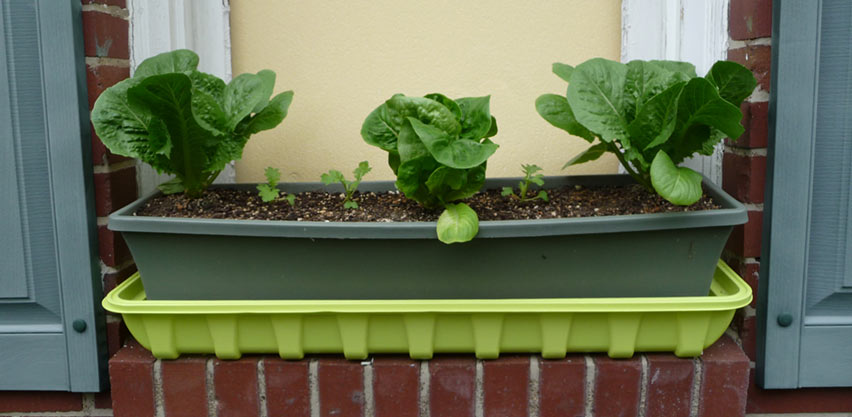
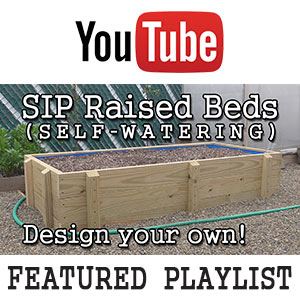
![ORGANIC Garden Produce [Gardening T-Shirt Design] ORGANIC Garden Produce [Gardening T-Shirt Design]](images/ORGANIC-Garden-Produce_Gardening-Tshirt-Spreadshirt.jpg)

